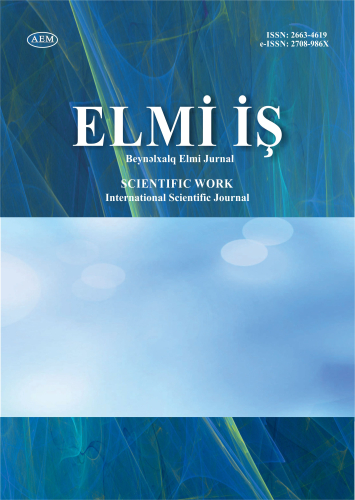DOI: https://doi.org/10.36719/2663-4619/89/141-145
Hüseyn Paşazadə
Bakı Dövlət Universiteti
magistrant
ƏLAVƏ DƏYƏR VERGİSİNİN AZƏRBAYCAN RESPUBLİKASINDA TƏTBİQİ TARİXİ VƏ BU SAHƏDƏ APARILMIŞ İSLAHATLARA DAİR
Xülasə
Dəyər vergisi Azərbaycan Respublikasının vergi qanunvericiliyi ilə müəyyən edilmiş dolayı vergi növlərindən biri olan əlavə dəyər vergisi 1992-ci ildən tətbiq edilir. Vergi Məcəlləsinin 153.1-ci maddəsinə əsasən Əlavə Dəyər Vergisi (bundan sonra − ƏDV) vergi tutulan dövriyyədən hesablanmış vergi məbləğindən və bu Məcəllənin müddəalarına uyğun olaraq verilmiş elektron qaimə-fakturalar üzrə müvafiq qaydada əvəz edilməli olan vergi məbləğindən hesablanır. Bu vergi növünün digər vergilərdən əsas fərqlərindən biri onun əlavə haqqdan, yəni məhsulun maya qiymətinə qoyulan əlavədən hesablanmasıdır.
Malların satışını həyata keçirən satıcıların heç biri faktiki olaraq vergi yükünü daşımır, çünki vergi hər dəfə yeni alıcı tərəfindən ödənilir, yəni əvəz olunur. Yalnız sonuncu istehlakçı məhsulu satmadığına, özü istehlak etdiyinə görə ödənişini başqasının vasitəsilə ödəyə bilməz, yəni əvəz edə bilməz. Bu vergi sisteminin üstünlüyü ondan ibarətdir ki, satış vergisi olduqda, satıcıların alıcılarının son istehlakçı olub-olmadığını yoxlamaq üçün heç bir həvəsi yoxdur. Yəni vergi ödəyicisinin vergi tutmağa meyli yoxdur. Amma əlavə dəyər vergisi olanda bütün satıcılar vergini yığıb dövlətə göndərirlər. Alıcı ödədiyi vergini geri tələb etmək istəyir, lakin bunu etmək hüququnu təsdiq etməlidir. Buna görə də onun köçürməni və təchizatçının qeydiyyat nömrəsini göstərən qəbzi olmalıdır.
Açar sözlər: əlavə dəyər vergisi, vergi, Azərbaycan tarixi, Azərbaycan Respublikasında əsas vergi növləri, vergilərin tətbiqi, vergi məcəlləsi, vergilərin tarixi, islahatlar
Huseyn Pashazade
Baku State University
master student
lawyer.huseyn@gmail.com
On the history of implementation of the value added tax in the Republic of Azerbaijan
and the reforms carried out in this area
Abstract
Value tax Value added tax, which is one of the types of indirect taxes defined by the tax legislation of the Republic of Azerbaijan, has been applied since 1992. According to Article 153.1 of the Tax Code, Value Added Tax (hereinafter − VAT) is calculated from the amount of tax calculated from the taxable turnover and from the amount of tax that must be replaced accordingly on electronic invoices issued in accordance with the provisions of this Code. One of the main differences of this type of tax from other taxes is that it is calculated from the surcharge, that is, from the addition to the yeast price of the product.
None of the sellers carrying out the sale of the goods actually bear the tax burden, because the tax is paid each time by the new buyer, that is, it is replaced. Only the last consumer, since he does not sell the product, but consumes it himself, cannot pay for it through someone else, that is, he cannot replace it. The advantage of this tax system is that when there is a sales tax, sellers have no incentive to check whether their buyers are end consumers. That is, the taxpayer has no inclination to collect tax. But when there is value added tax, all sellers collect the tax and send it to the government. The buyer wants to claim back the tax they paid, but must confirm their right to do so. He should therefore have a receipt showing the transfer and the supplier's registration number.
Keywords: value-added tax, tax, history of Azerbaijan, the main types of taxes in the Republic of Azerbaijan, application of taxes, tax code, history of taxes, reforms

